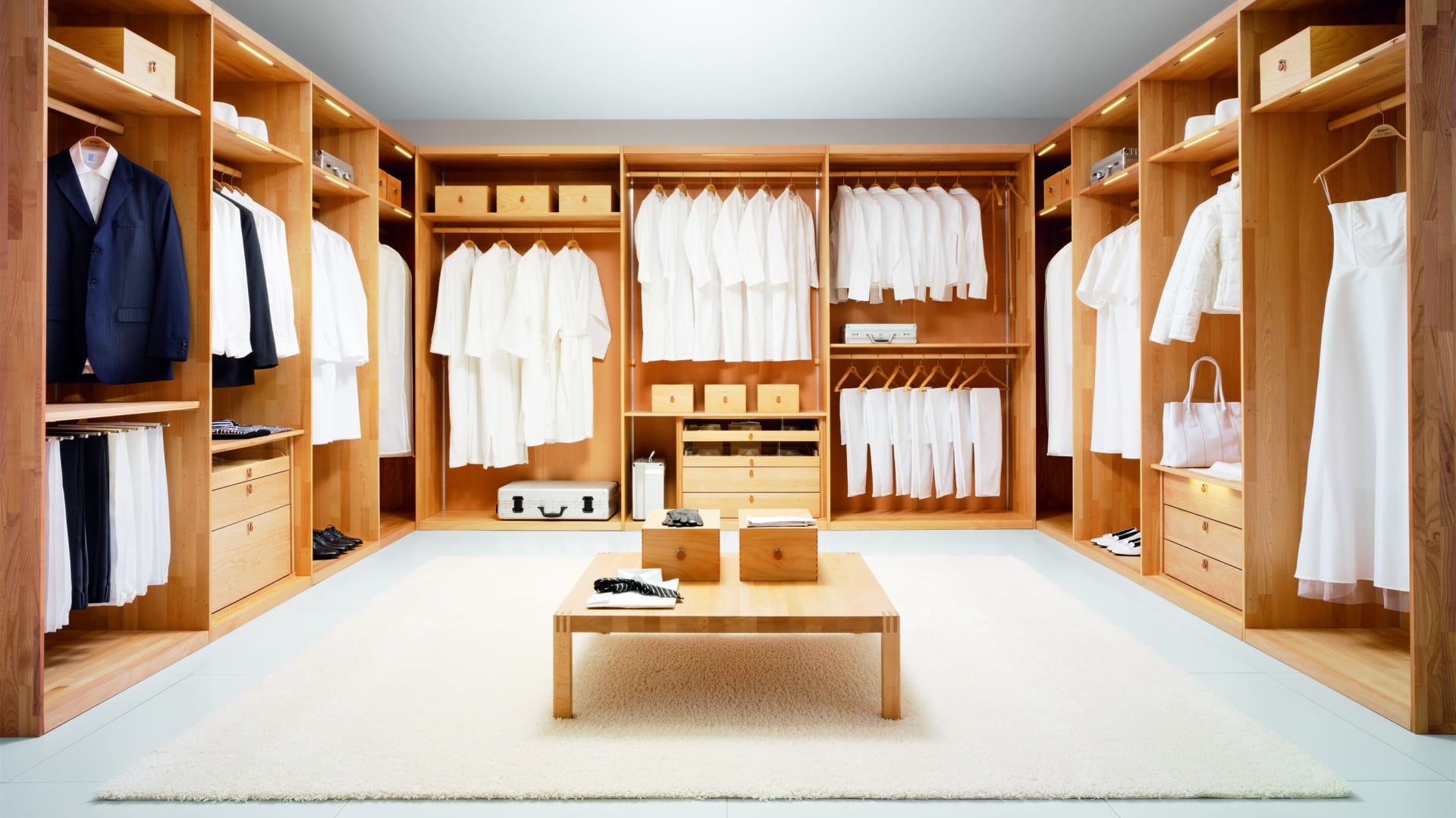Envisioning that dream home is something home buyers do ceaselessly. They make lists, they imagine, and then they make more lists. It is, after all, all about the dream so it quite naturally requires much dream time. After talking with experts in styling properties, we know that a few things can be counted on. The interesting thing is most of the lists created by home seekers involve lots and lots of storage options. Large walk-in wardrobes are invariably there, yet few home sellers actually take the steps necessary to replace the standard reach-in with the ultimate walk-in wardrobe in the master bedroom. We wonder why.
Perhaps we humans baulk at challenging jobs we don’t thoroughly understand. Sectioning off a part of a room, or knocking down a wall to access an alcove in a secondary room, seems a bit radical to the meek among us. Home stylists tell us, though, that creating a sensational walk-in wardrobe isn’t a hugely expensive project, or even a particularly labour intensive one. As with any new project, it simply requires a bit of learning, a little extra time, and loads of courage.
The first step in expanding the wardrobe space in your home is to discuss it with your home styling professional. Home stagers understand that adding storage where wasted space exists is practically a no-brainer, but not all home sellers understand how annexing a bit of space can ultimately result in a bigger selling price. Discuss this or any other project with your stylist in order to affirm that you won’t be spending money that cannot be recovered. Job one in selling your house is to improve your profit potential.
Once you’ve made your decision, your next step is to decide where the new space will come from. For example, in one old two-storey Victorian we know, the downstairs library/sitting-room was converted into the master bedroom complete with fireplace. The problem was that no wardrobe space existed in the original room.
Because the library had an exterior door to access the wrap-around front verandah, it became obvious that it was there that the walk-in wardrobe should be located. This involved walling off a section of the verandah and ‘borrowing’ an otherwise awkward alcove in the adjoining sitting room.
The owners inserted two walls, added shelves, cubbies, and a few rods and managed to create a very respectable walk-in wardrobe to the master bedroom. (The home was built before indoor plumbing was commonly demanded, so the small bathroom off the laundry area – also an afterthought – got a new door into the master bedroom and the entire suite became a reality.) The hardest part about this entire project was to find enough matching cladding to finish the wardrobe’s newly reconfigured exterior wall. In the end the old Vic got a big shot of modernisation without compromising her authenticity in a big way.
Planning a walk-in wardrobe addition in a newer home is far less daunting. Generally, you need not worry too much about taking away from the structure’s historic charm when you’re dealing with homes built in the last 60 or 70 years.
Older places, as in homes built in the 1930s and 1940s, have smaller bedrooms and frequently more of them. These dinky rooms can easily be annexed to the master and made into truly grand walk-in wardrobes if you’re so inclined. Again – discuss it first with your stylist and your selling agent. If your house only has three bedrooms, sacrificing one of them may be a difficult call. Styling properties does require some practical decision-making and an intimate knowledge of the comparable houses in your neighbourhood.
Adding a walk-in wardrobe to your master bedroom can raise the value of your home under most circumstances. In an upcoming article, we’ll give you some general step-by-step directions and pointers about how you can accomplish such an improvement. Again, allow us to stress that styling properties and making major changes to the house’s footprint shouldn’t be undertaken without the help of your home-styling professional. To do so would be a bit like removing your own tonsils – it may be possible, but it is certainly not recommended.




